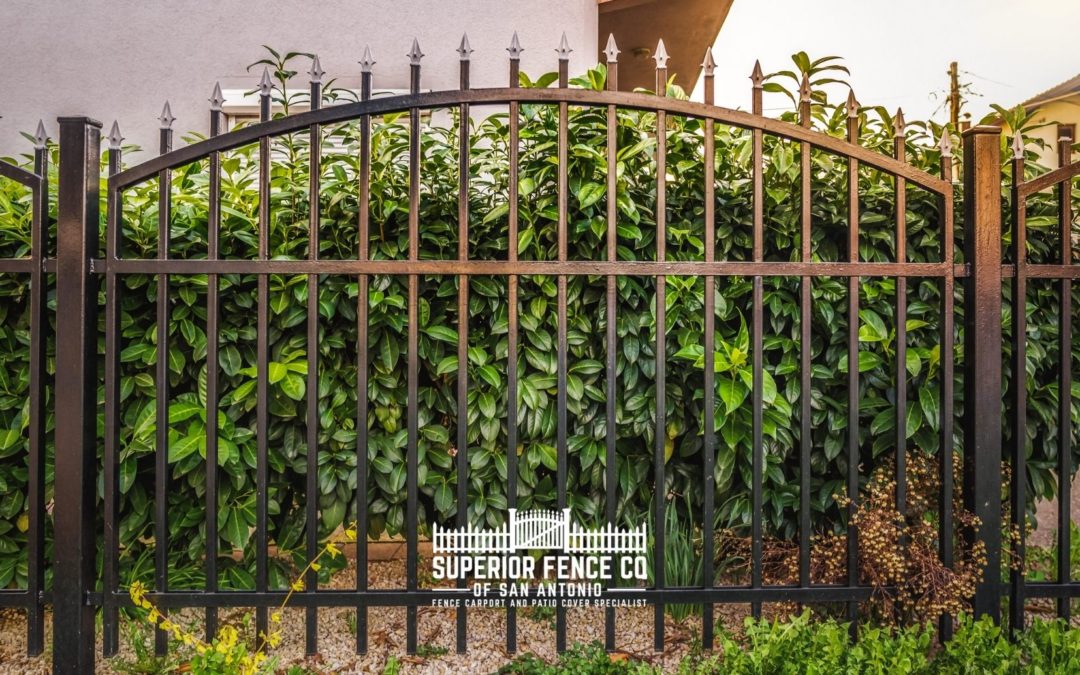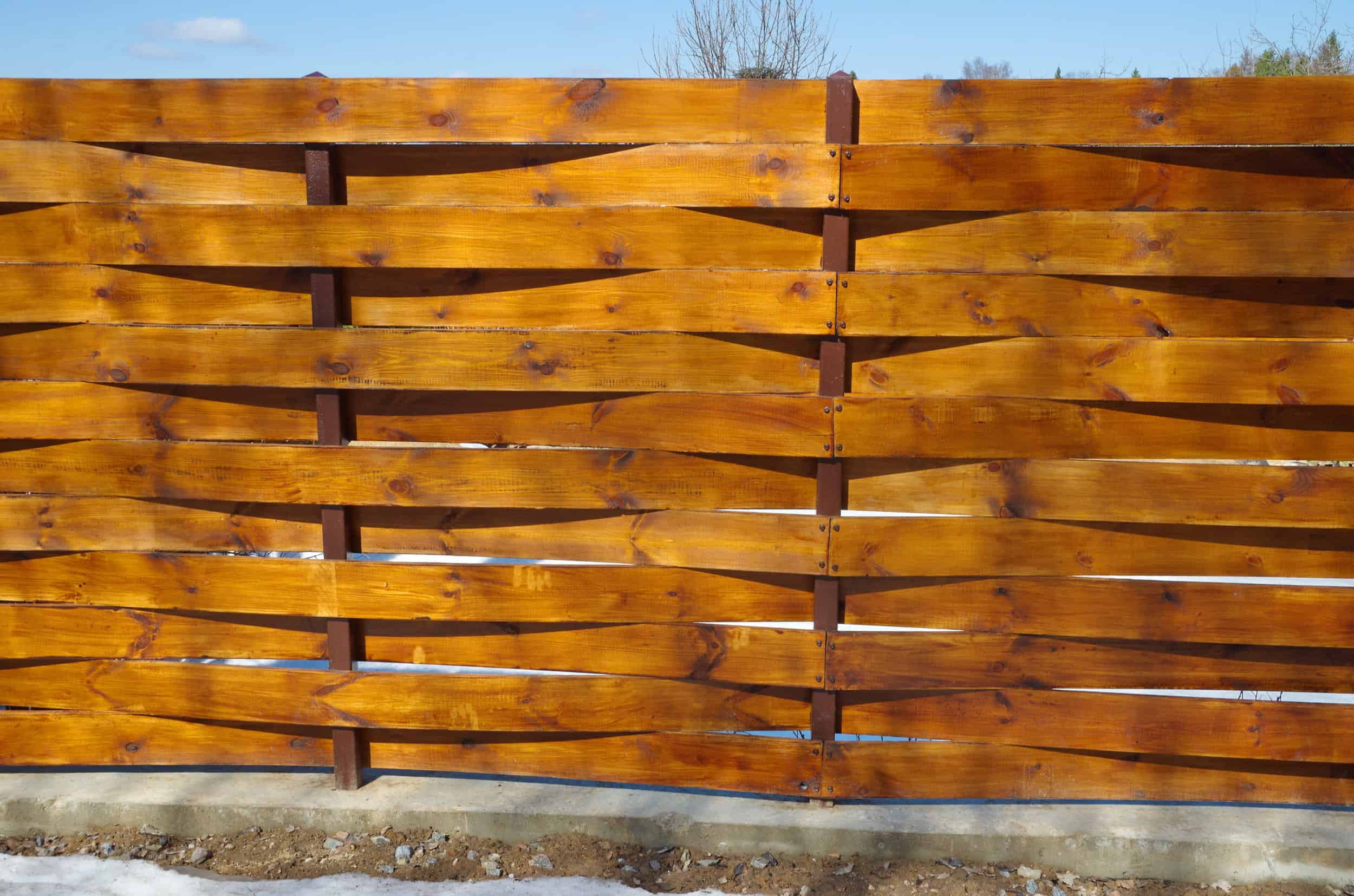All Categories
Featured
Your fencing is one of one of the most discovered elements of your property, constantly facing the difficulties of changing climate condition. Whether it's solid winds, hefty rains, or extreme warm, weather condition can create substantial damages to your fencing, causing pricey repair services and even a full replacement. There are several methods you can carry out to shield your fence and expand its life expectancy. Below are some sensible suggestions to guard your fencing from weather-related damage.
Vinyl Secure Fencing: Plastic is highly resilient and immune to moisture, deteriorating, and warping. It also needs little maintenance and can hold up against rough weather problems without fading or fracturing. Metal Fence: Wrought iron or aluminum fences are strong and durable versus wind and rain. However, they are vulnerable to corrosion with time if not correctly secured. Using a rust-resistant finishing can help protect their appearance and honesty. Compound Fence: Made from a mix of wood fibers and plastic, composite fences incorporate the most effective qualities of both products. They're resistant to rot, insect, and decay damages while using the look of natural wood. By choosing the best material, you can ensure that your fencing is much better outfitted to stand up to the components.
Moisture Defense: Sealers produce a waterproof barrier, protecting against rain from seeping into the wood and triggering rot or mildew. UV Protection: Sealers and spots obstruct UV rays, which can dry out and discolor the wood. Protect Appearance: Consistently using a safety coating will keep the fencing's all-natural beauty and protect against discoloration or fading. To ensure lasting defense, reapply sealant or stain each to two years, relying on your climate and fence wear.
![]()
![]()
Additionally, cleaning your fence can assist get rid of dirt, mold, and debris that can trigger long-lasting damage. For wooden fences, delicately pressure clean the surface to eliminate crud, while plastic fences can be cleansed with a moderate detergent option.
Final thought. Your fence is a beneficial financial investment that offers personal privacy, aesthetic, and security allure to your home. By taking positive steps to safeguard it from weather-related damages, you can guarantee its longevity and preserve its capability. Whether you're picking the appropriate materials, applying safety layers, or reinforcing blog posts, these basic strategies can help secure your fence from the components, saving you money and extending the life expectancy of your fencing for several years to find. Normal inspections and upkeep are key to catching problems early, so make sure to remain on top of your fence's care throughout the periods.
- Choose Weather-Resistant Products. Among the first steps in shielding your fencing from weather-related damage is choosing the appropriate material. Some materials are naturally extra immune to the components, reducing the requirement for consistent repair services. For instance:
Vinyl Secure Fencing: Plastic is highly resilient and immune to moisture, deteriorating, and warping. It also needs little maintenance and can hold up against rough weather problems without fading or fracturing. Metal Fence: Wrought iron or aluminum fences are strong and durable versus wind and rain. However, they are vulnerable to corrosion with time if not correctly secured. Using a rust-resistant finishing can help protect their appearance and honesty. Compound Fence: Made from a mix of wood fibers and plastic, composite fences incorporate the most effective qualities of both products. They're resistant to rot, insect, and decay damages while using the look of natural wood. By choosing the best material, you can ensure that your fencing is much better outfitted to stand up to the components.
- Safeguard Wood Fencings with Sealers and Spots. Wooden fences are specifically at risk to wetness, UV rays, and extreme temperatures. To shield your wood fencing from these issues, applying a top notch wood sealer or tarnish is necessary.
Moisture Defense: Sealers produce a waterproof barrier, protecting against rain from seeping into the wood and triggering rot or mildew. UV Protection: Sealers and spots obstruct UV rays, which can dry out and discolor the wood. Protect Appearance: Consistently using a safety coating will keep the fencing's all-natural beauty and protect against discoloration or fading. To ensure lasting defense, reapply sealant or stain each to two years, relying on your climate and fence wear.

- Strengthen the Fencing Posts. Fence messages are particularly at risk to shifting and weakening because of climate condition. Wind, rain, and even freeze-thaw cycles can trigger blog posts to lean or loosen up over time. To stop this, consider enhancing your fencing messages by mounting concrete footings or using more powerful materials for message anchors. This added security will certainly help shield your fencing from damages. if you live in an area with heavy winds or seasonal frost.
- Trim Surrounding Plant Life. Tree branches and creeping plants growing near or over your fence can trigger significant damages in stormy climate. Not just will this safeguard your fence, but it will also boost the general look of your lawn.
- Use Windbreaks. Wind is a significant element in weather-related fencing damages. A windbreak acts as an obstacle that decreases the direct influence of wind on the fencing, avoiding damages from high winds and gusts.

- Address Drainage Issues. Poor drainage is a major factor to fence damage, especially for wood fencings. Water that accumulates around the base of fencing blog posts can trigger them to rot over time.
- Routine Assessments and Upkeep. Regular maintenance is important for protecting your fencing from climate damages. Evaluate your fencing consistently, specifically after serious weather condition events, to recognize any type of signs of damages.
Additionally, cleaning your fence can assist get rid of dirt, mold, and debris that can trigger long-lasting damage. For wooden fences, delicately pressure clean the surface to eliminate crud, while plastic fences can be cleansed with a moderate detergent option.
- Apply a Rust-Resistant Covering to Steel Fencings. Metal fences, particularly those made from iron or steel, are prone to rust when subjected to moisture and humidity. To secure your steel fencing from rust, apply a rust-resistant finishing or paint. Guarantee that the finish is designed for outside use and can stand up to the components. If you notice any kind of rust places, sand them down and repaint the affected locations to avoid further deterioration.
Final thought. Your fence is a beneficial financial investment that offers personal privacy, aesthetic, and security allure to your home. By taking positive steps to safeguard it from weather-related damages, you can guarantee its longevity and preserve its capability. Whether you're picking the appropriate materials, applying safety layers, or reinforcing blog posts, these basic strategies can help secure your fence from the components, saving you money and extending the life expectancy of your fencing for several years to find. Normal inspections and upkeep are key to catching problems early, so make sure to remain on top of your fence's care throughout the periods.
Latest Posts
Why Chicago Drivers Prefer Montclare Auto Repair for Dependable Service and Huge Savings
Published en
1 min read
Discover Brake Repair & More: Full Services Guide from Montclare Auto Repair
Published en
1 min read
Don’t Miss Special Auto Repair Specials in Chicago at Montclare Auto Repair
Published en
1 min read
More
Latest Posts
Why Chicago Drivers Prefer Montclare Auto Repair for Dependable Service and Huge Savings
Published May 30, 25
1 min read
Discover Brake Repair & More: Full Services Guide from Montclare Auto Repair
Published May 29, 25
1 min read
Don’t Miss Special Auto Repair Specials in Chicago at Montclare Auto Repair
Published May 26, 25
1 min read